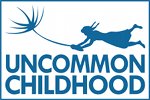A boat ride to Panajachel
March 6, 2010 in Guatemala, North America, Travelogue
Nonetheless, we enjoyed Panajachel, perhaps all the more since we could congratulate ourselves on not staying there. Straight off the boat we piled into a tuk-tuk, all six of us. Well, almost all six of us, Gabe and Elisha hung off of the outside, balanced on the wheel covers, just like the third world children they long to be. We found the elusive embroidered patches for Mexico and Guatemala, purchased a handful of little dolls for a dollar, and Tony finally found his hat. An English bookstore yielded a decent road map of Guatemala and Belize, which we’ve been sorely lacking, and a stack of postcards for journals and friends. Hannah and I each got a head wrap, two for a dollar. We ate our lunch, pollo, arroz con salsa y guacamole con frijoles negros on the waterfront under the hungry eye of a stray dog. There’s no better lunch to be had for two bucks a person anywhere, I’m sure of it.
We took the long way home, the barca that stopped at every little village around the lake, even the one with no road to it. We discussed the tempting possibility of simply flying into Guatemala city, hopping a chicken bus to Pana and then a boat to one of the little villages and wasting a whole three months here next winter. The water is rougher in the afternoon, and I watched Ezra like a hawk, hoping he’d remember my admonition upon boarding: “If you have to throw up, do it on the DOWNWIND side.” I need not have worried. The little boys and I whiled away the afternoon on the rocks off the point a quarter mile or so down the way. We wandered back and forth, looking for the “best spot” for the little men to test out their new snorkels and for me to sit in the sun and knit. We avoided the nice stretch of beach heavily crowded with women, waist deep in the lake water, washing their clothes on rocks. They smiled and waved at the boys, hanging their cortes and huipils on poles suspended for the purpose. We finally settled on a secluded pile of rocks inhabited by only one other family, grandparents and two young boys. My elves dove in and began studying the lake life beneath the surface, swimming around the legs of the grandmother. She wore her corte skirt and a strand of red beads and nothing else, her leather brown skin flapping in time to the rhythm of the clothes she was pounding on the rocks. She chatted away in an Indian language to her family, and occasionally to me in Spanish. We laughed at the boys, hers and mine, as they splashed together in azure blue water. The adventure of the day, for the boys, was finding their first floating rocks. At first they thought the pumice was a chunk of plastic and they were astounded when it turned out to be rock. It immediately became the mission of the afternoon to collect as many pieces as possible to take back to their friends. “They’ll NEVER believe this Mom! We don’t have rocks that float at home!!” No, we certainly don’t. I talked a long while with some local men who came down to the point to strip to the skin and swim, wash their clothes and play. They borrowed the kids’ snorkels and rewarded them with a pair of crabs they captured at the base of the rocks. “There are lots more down there, bigger ones, they are good to eat,” the boys filed that important information away and nodded their thanks, with a gleam of plans to come in their eyes. Being Saturday evening, we’re headed into town tonight. Hoping to catch a repeat of the parade Tony and I followed last night, a long street full of tiny women in identical head wraps and multi-colored cortes singing in an unknown language, following a huge, gold gilt image of Christ carrying his cross; a lenten procession. We were sorry the kids missed it, but they were long since asleep. As I sit to write this, the sun has set somewhere behind the western most volcanoes, the tops of which are obscured by clouds. A vanilla twilight has settled over the lake and this afternoon’s waves have melted into a mirrored calm. The only sounds are the fellow sweeping the courtyard in long, slow strokes, strains of music drifting from some distant place mixed with laughter, and the occasional, jarring rumble of a tuk-tuk barreling down the steep hill behind me. There are lots of other places to be, but tonight, I’m glad to be here.




 RSS - Posts
RSS - Posts


























sounds like a little serenity in your exciting trip, glad you’ve got a moment to enjoy yourself! I enjoy traveling vicariously through you!
I LOVE Pumice, it’s SO cool!
Can we go with you next time? We might need 2 tuk tuks though.
Pick mom and I up hats for C-stone light color, tan or white, and dressy enough you’d wear them . . . . we’ll pay you for them when you get here. Love to all
We’ll look! I’ll let Tony know that’s what you’re wanting… I’ve got an idea for you already!!
Keri… most definitely… and we had room for at least two more kids hanging off the tuk-tuk, so save your money!